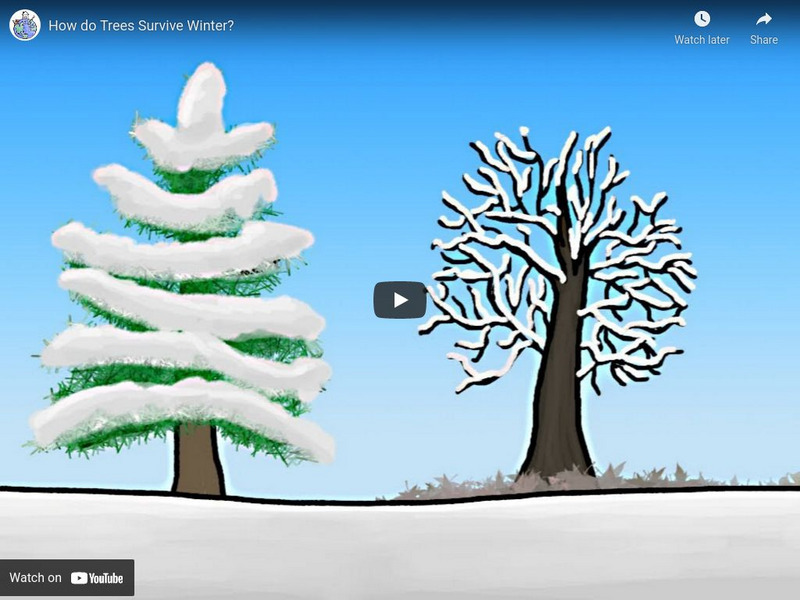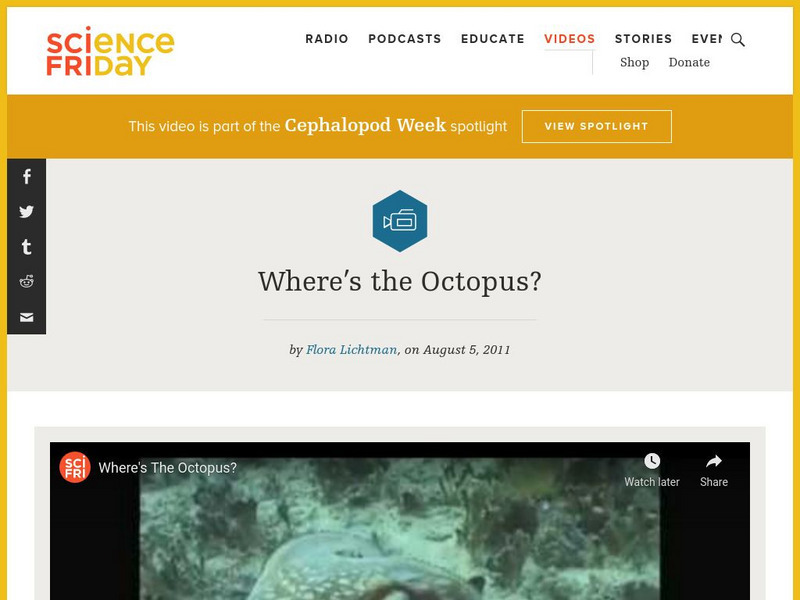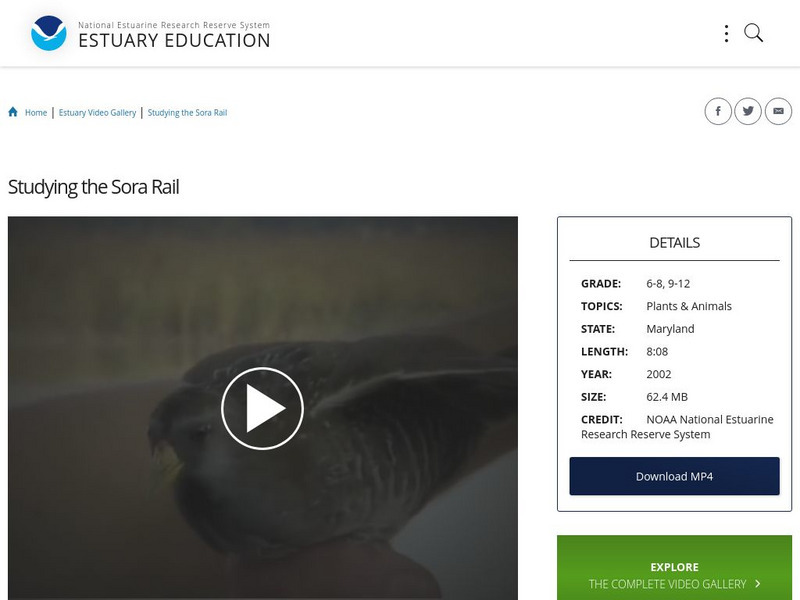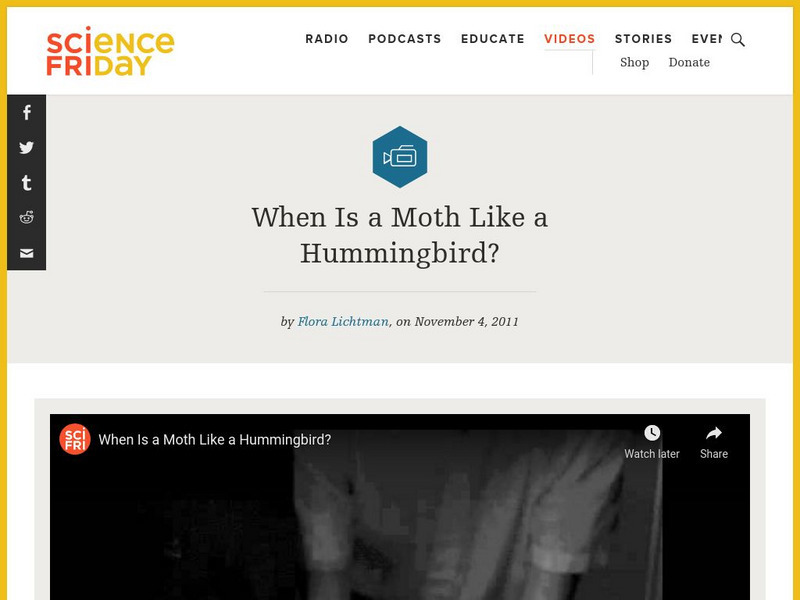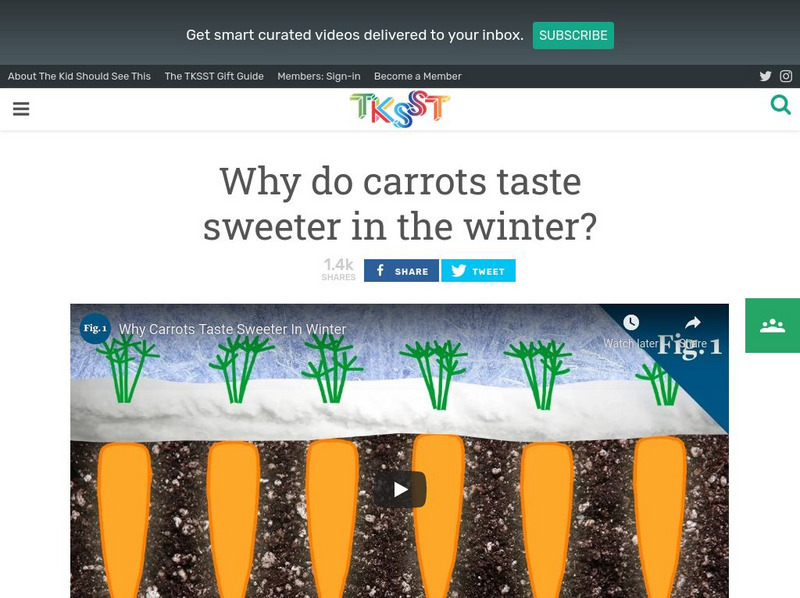California Academy of Science
Penguin Wave
Emperor penguins keep warm at sub-zero Arctic temperatures. How do they do it? Think of the energy generated during a sporting event wave of the crowd, and you will be getting warmer! This short clip shows that tiny, wave-like movement...
Curated OER
STEMbite: Seed Dispersal
Dandelion and maple tree seeds are blown and thrown to show two methods of seed dispersal. The narrator videotapes from his vantage point, his hands visible, but never his face. He examines helicopter blades as a human imitation of...
TED-Ed
Meet the Tardigrade, the Toughest Animal on Earth
The toughest animal on Earth is also one of the smallest creatures on Earth. Watch a video about the tardigrade and its ability to withstand many stressors, including lack of water and freezing temperatures.
Curated OER
A Genuine Bee Movie
Filmed like a teaser trailer for a dramatic movie, this clip showcases the adaptations of pollination and bees. Lady Bee flies from flower to flower while intermittent descriptions of her actions are highlighted. This is very cute.
Curated OER
Biomes: Grasslands
Witness the spectacular imagery of tropical grasslands in this non-narrated video. Read some facts pertaining to this biome in the first minute, and then enjoy a brief glimpse of the wildlife native to the tropical grasslands.
Curated OER
How the Quiver Tree Survives in the Desert
Did you know there's a desert tree that can perform self-amputation to reduce the amount of water it needs? Use this video clip to introduce your class to the ways different plants adapt to a hard desert environment.
Curated OER
Biomes: Deciduous Forests
Deciduous forests can be found in almost all corners of the world, ranging from the United States to Russia to New Zealand. While this video has slightly choppy editing, it covers the types of animals, trees, and fungi that live in the...
Curated OER
Mountain Biome
Soar through the mountain biome with the Andean condor, and slink along the rugged mountain terrain with the snow leopard. This is a tough environment to survive in, and this video highlights some of the hunting patterns of various...
Curated OER
STEMbite: Evolution of Behavior
Drew sneaks up on various animals to show their different behaviors. He discusses the fact that behavioral adaptations evolved over time, just like physical adaptations. Unfortunately the shade of the trees in the first part of the video...
PBS
Pbs Learning Media: Wild Kratts: Koala Balloon
In this episode of the Kratt brothers, we learn about how animals adapt to their environment in order to survive. The storyline has them visiting the Australian Outback to help a young koala return to its eucalyptus forest home. They...
Monterey Institute for Technology and Education
National Oceanic and Atmospheric Administration: Deep Sea Benthos
This video shows a variety of deep sea animals (benthos) and explains the adaptations that enable them to live at extreme depths.
PBS
Pbs Learning Media: Evolution of Camouflage
This video segment from Evolution: "Darwin's Dangerous Idea" illustrates the remarkable camouflage of a praying mantis against its leafy backdrop. [0:57]
PBS
Pbs Learning Media: Fish With Fingers
In this video segment from Evolution: "Great Transformations," paleontologist Jenny Clack explains that vertebrates evolved fingers before they invaded land. [3:49]
Howard Hughes Medical Institute
Hhmi: Bio Interactive: Icefish Film With Quiz
This video will explore adaptations by looking at how genes are reused and recycled in icefish. The video includes embedded quiz modules to test students' understanding. [13:14]
Sophia Learning
Sophia: Organisms: Adaptations to Environment: Lesson 1
This lesson discusses how living things adapt to survive changing environments. It is 1 of 4 in the series titled "Organisms: Adaptations to Environment."
Minute Earth
Minute Earth: How Do Trees Survive Winter?
Learn about some survival mechanisms that allow plants to survive in cold climates. [2:49]
Minute Earth
Minute Earth: The Secret Social Life of Plants
Plants are more than just green, photosynthesis machines. They behave and adapt to their environmental cues much like animals do. [2:32]
Science Friday Initiative
Science Friday: Where's the Octopus
A movie following the research of Roger Hanlon on cephalopods and their ability to use camouflage. Learn about a cephalopods ability not only to change their coloring but also their skin texture. Roger Hanlon explains his research and...
NOAA
Noaa: Estuary Education: Studying the Sora Rail
Have you heard the expression "skinny as a rail?" Learn where it originated and much more about this unusual bird, the Sora Rail. [8:05]
Science Friday Initiative
Science Friday: When Is a Moth Like a Hummingbird?
Understand how the hawk moth keeps a precise position in the air, with a UNC Chapel Hill biomechanist's study using high speed cameras. [4:06]
The Kid Should See This
Tksst: Why Do Carrots Taste Sweeter in the Winter?
Listen as Molecular Biologist Liz Roth-Johnson explains why cold weather makes carrots taste sweeter. [1:02]
Other
Fuse School: What Is Adaptation?
Investigate how organisms adapt to their environments through this to-the-point video. [1:22]
The Kid Should See This
Tksst: Deep Look: What Gives the Morpho Butterfly Its Magnificent Blue?
Take a look into structural coloration, the physics of light, and how it is possible that the Morpho butterfly's wings appear to be blue, despite their containing no blue pigment at all. [3:03]
Other
Flocabulary: Adaptation
Students will learn how plants and animals develop cool tricks for surviving amid different climates, predators and more. [2:49]













